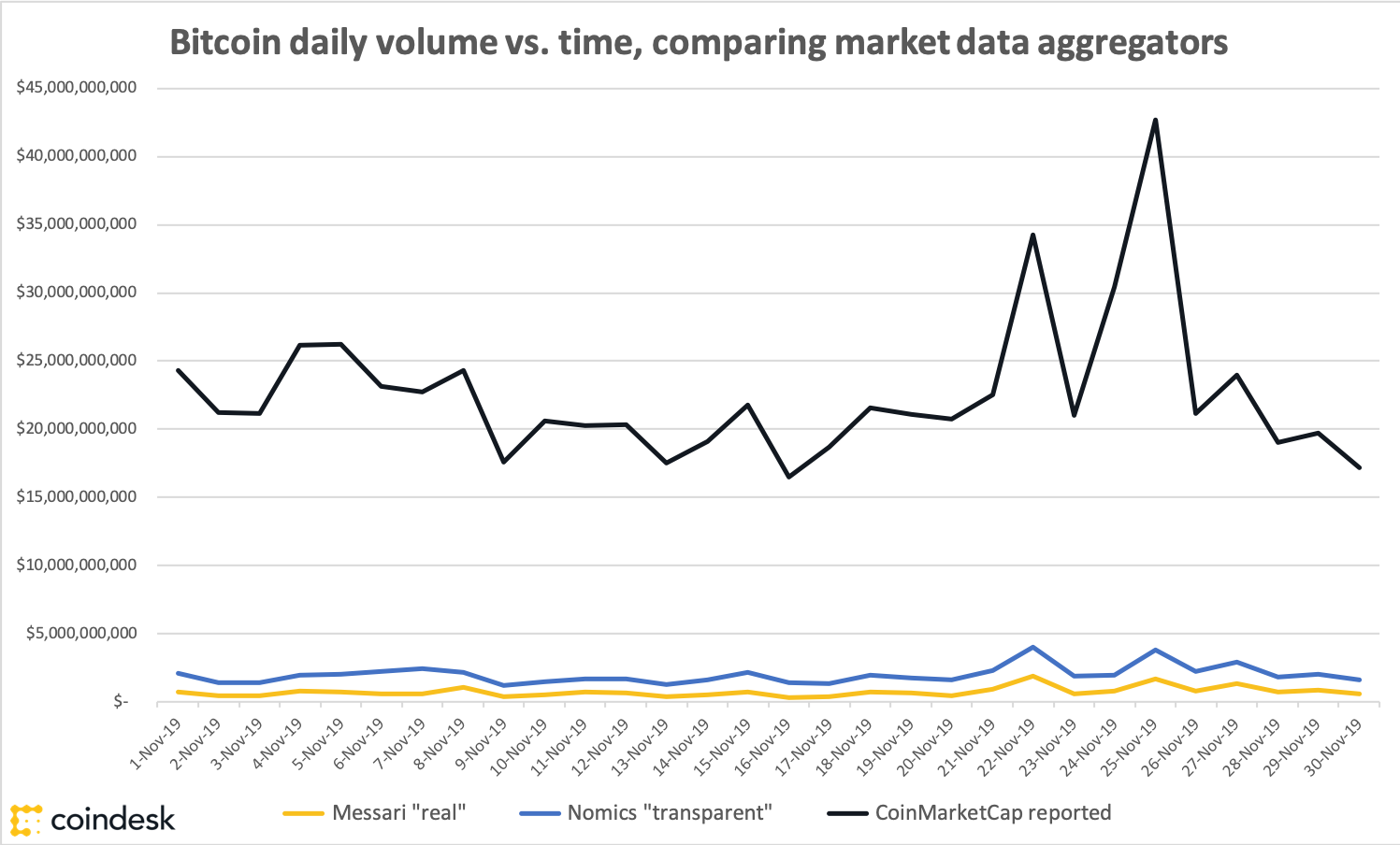The Fed’s Rate Cut Trajectory Remains Intact, Boosting the Crypto Outlook
Last week’s inflation report did little to change the Federal Reserve’s easing cycle.
Over the last few weeks, the yield on 10-year U.S. Treasury bonds has quickly jumped from 3.6% to 4.1%. The underlying driver of the change has been a swap by quant-driven fund managers. They’ve rotated out of fixed-income investments into equities. As bond prices have fallen, yields have jumped.

02:26
Bitcoin Price on the Rise Amid BTC ETPs’ Best Week Since July; Dogecoin Extends Its Rally

12:20
Dragonfly General Partner on Market Volatility: A Buenos Aires Special

01:00
Latin America’s Crypto Surge: A Battle Against Inflation

01:48
Nishad Singh’s Lawyers Ask Judge to Spare Him Prison; Italy to Raise Capital Gains Tax on Crypto
But that hasn’t stopped the stock-market doomsayers from trying to capitalize. They’re trying to pull every lever possible to say that stocks can’t keep rallying. But they’re not paying attention to the bigger picture story.
Lately the narrative has focused on why our central bank can’t cut interest rates. A couple of weeks ago the new government in Japan was hell bent on tightening so we couldn’t afford to cut to keep our bonds attractive. Last week, the economy was running too hot because payroll gains were stronger than anticipated, implying easing would fuel inflation.
:format(jpg)/cloudfront-us-east-1.images.arcpublishing.com/coindesk/ACQONMF6VJG77CJGTDUTPYVZ4A.png)
The first story was quickly rebutted when Japan’s new prime minister said the economy can’t handle rate hikes right now. The second story was dismissed when domestic policy makers said the September employment gains aren’t enough to change the broader employment slowdown.
This week, the negative nellies were at it once again. They said higher-than-anticipated consumer price index (“CPI”) growth for September meant rate cuts are off the table. But this time like before, they weren’t focusing on the broader picture. Because if we forget about short-term expectations, we see the long-term inflation trend is headed in one steady direction down. That means our central bank will have plenty of room to lower interest rates well into next year, underpinning a steady rally in risk assets like crypto.
But don’t take my word for it, let’s look at what the data’s telling us.
The U.S. Bureau of Labor Statistics reported September CPI growth of 2.4% compared to the expectation for 2.3%. Now, while that may be a disappointment compared to what economists had predicted, when we view it relative to August’s 2.5% increase, that’s still a move in the right direction.
:format(jpg)/cloudfront-us-east-1.images.arcpublishing.com/coindesk/6HCSLD6CGNFJ3KNMHYRTZM4PYM.png)
In the above chart, you’ll notice yesterday’s result marked the lowest rate of CPI growth since February 2021. And you can also see the metric is quickly approaching pre-pandemic levels.
But let’s drill down a little further. Let’s look at the monthly growth trend on a quarterly basis.
:format(jpg)/cloudfront-us-east-1.images.arcpublishing.com/coindesk/3OXOVP67LJDCZE3VKLT5ZWFFXY.png)
As you can see from the above chart, price pressures appear to have a defined trend over the course of the year. From January through March, CPI averaged a 0.6% increase. In the April through June span, prices increased at a rate of 0.3%. And for the last three months, the pace of growth has held steady around 0.1%. Clearly a steady slowdown.
So now, we want to go back and look at the trend over the last few years. This way we can see if the activity this year is out of whack.
Well, based on the numbers since 2021, the rate of monthly inflation growth tends to slow throughout the year. And as we’ve moved further away from the effects of COVID stimulus, we can see the slowdown has accelerated.
:format(jpg)/cloudfront-us-east-1.images.arcpublishing.com/coindesk/WOGYMXIPXRBPRLAKASE7EWIA64.png)
Our chart shows us that inflation growth typically runs the hottest in the first two quarters of the year. Then, in the third and fourth quarters, it can slow to almost a crawl. In fact, in the fourth quarter of 2022 there wasn’t any growth, while the end of last year saw CPI contract. The implication being inflation growth should slow more over the next three months.
But we want to get an idea of whether economic trends are returning to normal. Because, if they are, it means the Fed can also return interest rates back to more normal levels. So, let’s look at what the pace of monthly growth has done the last few years relative to the pre-pandemic average.
In 2021-2022, when inflation was exploding higher, the average pace of monthly growth was 0.6%. In other words, CPI expanded at roughly 7.2% per year. But as interest rates shot up, the pace of monthly growth has slowed. In 2023, the average month-over-month growth was 0.3%, or 3.6% annualized, while year-to-date it has averaged 0.2%, or 2.4% annualized. For pre-COVID levels, I ran the numbers from 2009 through 2019. What I found was that inflation rose just over 0.15% per month.
Based on the numbers, it would appear the trend for inflation is returning back toward pre-pandemic levels of normal. So, I modeled what annualized growth would look like if that’s the trend going forward…
:format(jpg)/cloudfront-us-east-1.images.arcpublishing.com/coindesk/ERQMC5VIMBAM3BGRTIP7M6ZWG4.png)
Based on the result, CPI could be back below the Fed’s 2% target as soon as February. In other words, within the next five months, our central bank could be close to achieving one of its primary goals since it started raising rates in March 2022.
The last thing we want to look at is what kind of room the Fed has to lower rates. Well, the difference between the effective fed funds rate and annualized CPI growth, following the release of the September data, sits at 250 basis points.
That’s one of the highest levels going back to 2000. More importantly, it tells us that the Fed can lower rates by that same amount before policy no longer weighs on inflation.
So, like I said at the start, the stock-market boo-birds are trying everything they can to try and get equity prices lower. But in the process, they’re hoping everyone will get caught up in the noise and not pay attention to the signal.
Currently, Wall Street expects borrowing costs to drop from 4.9% today to 3.4% by October of next year. Based on the numbers we just looked at, the Fed has plenty of room to do that right now. And it would still have a cushion of another 100 basis points.
But why waste the bullets if you don’t have to? Instead, our central bank can take its time and save the ammo for when it really needs it. The change should support stable economic growth and a steady rally in risk assets like bitcoin and ether.
Note: The views expressed in this column are those of the author and do not necessarily reflect those of CoinDesk, Inc. or its owners and affiliates.
Edited by Benjamin Schiller.
Disclosure
Please note that our
privacy policy,
terms of use,
cookies,
and
do not sell my personal information
have been updated
.
CoinDesk is an
award-winning
media outlet that covers the cryptocurrency industry. Its journalists abide by a strict set of
editorial policies.
CoinDesk has adopted a set of principles aimed at ensuring the integrity, editorial independence and freedom from bias of its publications. CoinDesk is part of the Bullish group, which owns and invests in digital asset businesses and digital assets. CoinDesk employees, including journalists, may receive Bullish group equity-based compensation. Bullish was incubated by technology investor Block.one.
:format(jpg)/s3.amazonaws.com/arc-authors/coindesk/6597e0a4-8a0d-4fe1-af83-3b67e81994fe.jpg)
C. Scott Garliss spent 22 years on Wall Street working with hedge and mutual fund investors. He has also spent the last seven years writing retail invest commentary for MarketWise. You can follow him and subscribe to his daily thoughts on SubStack or LinkedIn.









